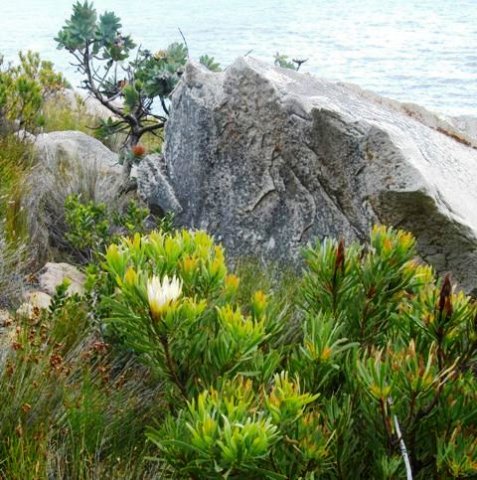Protea repens

Protea repens or the common sugarbush is an erect shrub that grows to heights around 4 m (SA Tree List No. 94.2).
The leaves are hairless, narrow or spathulate to oblanceolate.
The buds often glisten in the sunlight with escaping nectar and opens into a neat, conical cup replete with numerous erect florets. The flowerhead outer part is formed by several rows of acutely pointed, hairless involucral bracts. Their colour varies among white, shades of pink to red or tipped with pink. The plant flowers generously through the colder months and to some lesser extent throughout the year.
P. repens has one of the largest natural distributions of all the Cape Protea species, ranging from Nieuwoudtville southwards to the Cape Peninsula and eastwards along the south coastal and mountain fynbos to Grahamstown.
The habitat is variable, fynbos slopes and flats in clay and sandstone soils. The plants are cold resistant, also growing on the higher mountain slopes to near the snowline, to the extent that one can speak of a snowline in South Africa. The species is not considered to be threatened in its habitat early in the twenty first century.
This was the first Protea ever to be grown to flowering stage outside South Africa. This happened when Francis Masson introduced some plants into Kew Gardens in 1774. They flowered around 1780, followed by the plant’s introduction into Australia, New Zealand and California more than a century later.
Apart from the flower colour variations, there are also regional size variations, notably the smaller form found near Ladismith (Manning, 2007; Rourke, 1980; Eliovson, 1973; http://redlist.sanbi.org).

